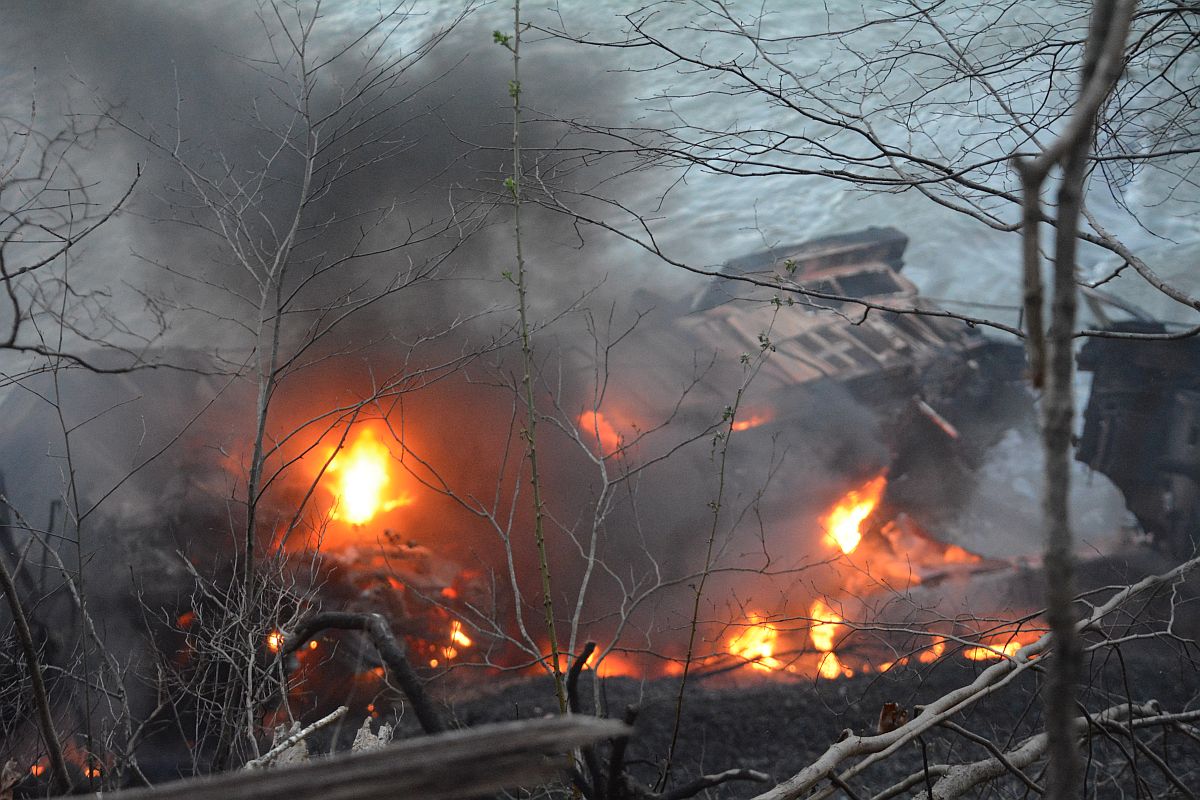MORGANTOWN, W.Va. — A recent study by researchers from the National Atmospheric Deposition Program at the Wisconsin State Hygiene Lab suggests pollutants from the February 2023 East Palestine, Ohio train derailment caused a “mineral shock” that was detected in more than a dozen states including West Virginia.

National Atmospheric Deposition Program Coordinator and University of Wisconsin scientist David Gay said researchers analyzed ground samples from between Jan. 31-Feb. 14, 2023, which was about one week before the Feb. 3 disaster and about one week after. The study determined contaminants blanketed 540,000 square miles as the plume extended into the upper levels of the atmosphere and was carried by the jet stream.
“We saw those very high concentrations; they’re high relative to what we normally see in our network during the week of the accident, and after the accident, those concentrations went back to normal,” Gay said. “And we saw them at a broad range of sites across the Midwest and Northeast.”
Thirty-eight Norfolk Southern cars jumped the tracks releasing hydrogen chloride and phosgene into the atmosphere. Residents in a one mile radius of the derailment were evacuated. West Virginia was part of the multi-state emergency response.
Since 1978, the National Atmospheric Deposition Program has kept tabs on what’s in the precipitation across North America. Parsons and Beckley are among the stations monitored for this study in West Virginia.
“I would say those two sites, from what we could measure, got a glancing blow from the pollutants, and we only saw one concentration above 95 percent,” Gay said.
The researchers found an unpredicted level of pH, alkaline, and earth metals that were, in some cases, in the 95th percentile of measurements taken over the last ten years.
“We measured high chloride, high Ph’s, so more basic, and a lot of the so-called alkaline metals—calcium, magnesium, sodium, and potassium,” Gay said.
Gay said the minerals measured from the precipitation before and after the disaster detail the “mineral shock” in the ecosystem. The shock was measured as far south as South Carolina, to the New York/Canadian border, and as far west as Wisconsin.
“Those eco-systems are constantly being barded by these kinds of pollutants, but they got a heavy shock of it that week,” Gay said.
No injuries or fatalities were reported, but residents near ground zero reported the deaths of animals, rashes, burning eyes, and headaches and are now concerned about the long-term health effects. Further away from ground zero, Gay said the derailment produced a relatively harmless spike picked up in the study.
“I don’t think the concentrations are harmful to humans,” Gay said. “It’s certainly a nuisance, and I know it added pollutants and chemicals to the ecosystem, but I know it was short-lived.”

